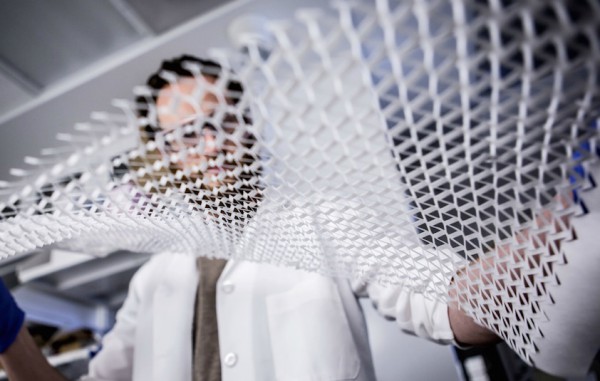Researchers implement Japanese paper cutting techniques to develop stretchable plasma screens and batteries

For years, we’ve been using motherboards that are designed to be flat, coming in square and rectangular shapes. But one challenge with such design is that when you bend it, the circuit board breaks and becomes less efficient due to tearing. But that is about to change, thanks to the long inspirational Japanese paper cutting techniques.
A University of Michigan research team lead by Professor Nicholas Kotov has found out a way to implement Japanese paper cutting techniques -- otherwise known as kirigami -- to a new type of flexible conductor, which can be used to make electrodes and wires. The new type of flexible conductor for the first time enables us to think of gadgets that could bend, and even transform.
It’s not just a theoretical observation. The researchers recently demonstrated the first prototype of the kirigami stretchable conductor consisting of tracing paper covered in graphene nanotubes. The layout of this consisted of cuts like rows of dashes that opened to resemble a cheese grater.
"The kirigami method allows us to design the deformability of the conductive sheets, whereas before it was very Edisonian process with a lot of misses and not a lot of hits", said Nicholas Kotov, the Joseph B. and Florence V. Cejka Professors of Engineering.
The team says that this holds the possibility to change the way our future gadgets will look. We could have implantable medical devices -- which previously couldn’t be as efficient as they couldn’t adjust with a human body’s nature of flexing and bending.
But that’s not the end of it. This technique can also march in a new innovation in batteries. Arizona State University and China’s Jinan University have teamed up to create the first flexible batteries for wearable gadgets. The teams demonstrated a folded stretchable battery that could be used to power a smartwatch. They managed to replace the 300mAh battery found inside Samsung’s Gear 2 smartwatch with the coated kirigami-cut aluminum foil. And even after stretching, the Gear 2 smartwatch continued its video playback.
“The kirigami-based methodology can be readily expanded to other applications to develop highly stretchable devices and thus deeply and broadly impact the field of stretchable and wearable electronics.”, says ASU leader Dr. Jiang. Other applications may include smart bracelets and smart headbands”.
By having these batteries in our future gadgets, not only can we have thinner devices, but we could use the extra space to stuff up more battery into it. The team, for instance, noted that they could easily add another 300mAh battery inside the Gear 2, which will essentially double its battery life.
Researchers are very confident that we could see gadgets with such stretchable internal conductors in the very near future.